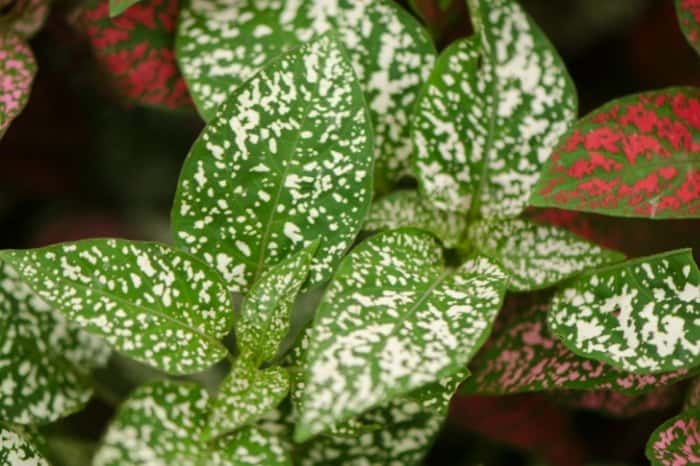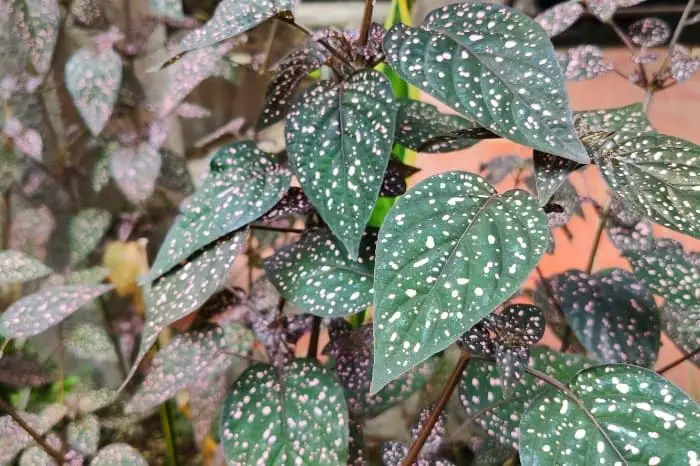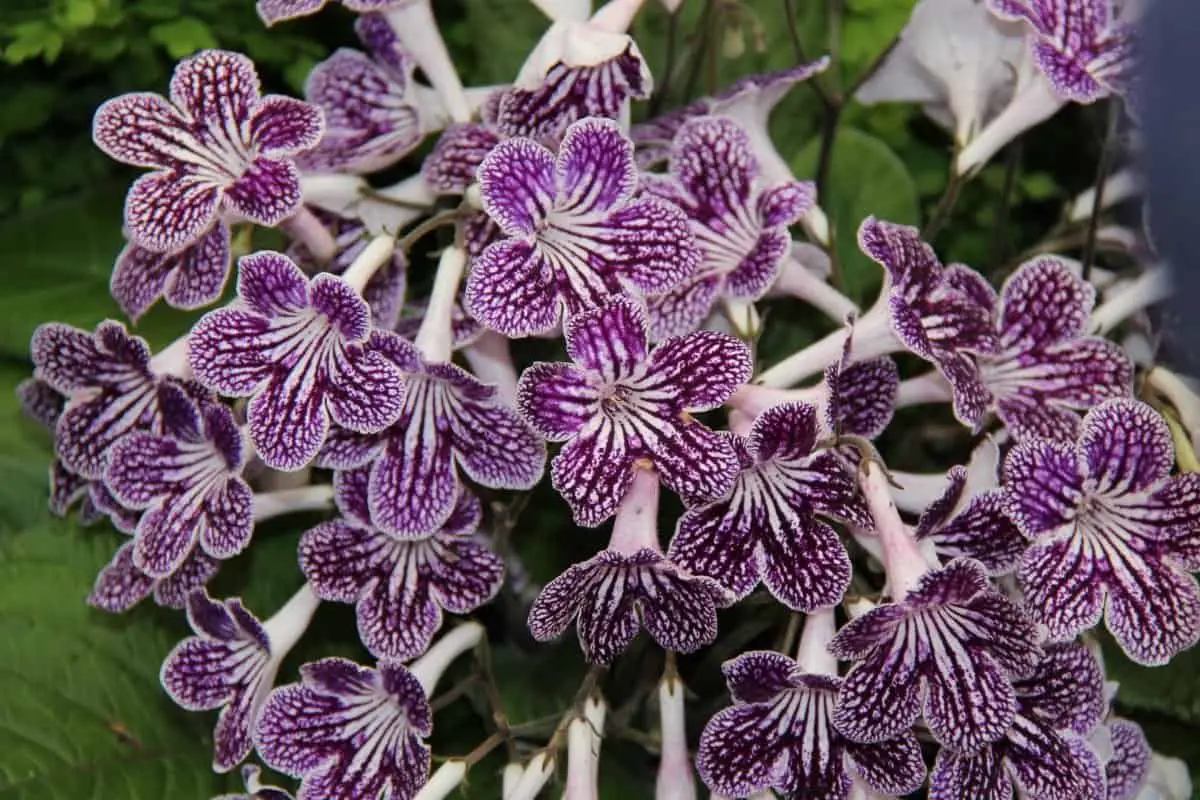Last Updated on December 13, 2021 by Cristina
The Polka dot plant is a houseplant most people keep indoors, but some wonder if planting a Polka dot plant outdoors is possible. Luckily, we come bearing good news, as it’s entirely possible to plant and grow your Polka dot plant outdoors. In today’s article, we’ll be learning how to plant, maintain and care for your Polka dot plant outdoors!
Planting A Polka Dot Plant Outside
According to many gardeners, Polka dot plants are better suited for life indoors, but that doesn’t take away from the fact that they can still be planted outside. You have to be careful about a few things before you do this, though.
Firstly, it’s important to not plant them earlier than spring! It’s best to wait for the last frost to pass – the temperatures should reach 70° Fahrenheit or more. This will ensure that the ground is warm enough for the plant to survive. The average temperature this plant enjoys is right between 70 and 75 degrees Fahrenheit!

It appreciates a humidity percentage of 50%, and these conditions apply for both inside and outside planting! The Polka dot plant isn’t overly fond of light – they don’t need too much lighting, so you can freely plant them in a partly shaded area. You can add them as a shiny addition to a shadier part of your garden, as they’re one of the plants that don’t need too much sunlight. You can also grow them in a container, although container-grown plants usually don’t grow to be as large as plants grown in the ground!
Additionally, regarding the location, they like soil that’s well-drained. Once you plant them, make sure to throw in a layer of compost and water these plants regularly.
That’s pretty much everything there is to growing a Polka plant outside! The reason some gardeners prefer to keep them inside is because it is easier to control the conditions on the inside. If you live in an area where the temperatures and humidity aren’t right, then you shouldn’t be planting a Polka dot outside – it won’t achieve the results you want it to.
Polka Dot Plant Care And Growing
Hypoestes phyllostachya, just like any other plant, has a certain range of requirements. If you oblige and follow them, you’re most likely going to have a very successful plant on your hands!
Originally from Madagascar, this plant usually doesn’t grow to be taller than 18 inches, and it’s well known as a quick grower. It isn’t a toxic plant, therefore it won’t harm any pet, and it’s more or less pest resistant. This plant belongs to the Hyphoestes group, which includes more than 100 plants. You can recognize this plant easily by its dark spots over the leaves. Nowadays, there are many varieties of this plant: purple, white, lavender, and scarlet.
Lighting
As we already mentioned, these plants don’t like too much light. However, this runs much deeper than you might think! They need light, but not direct sunlight, which is why we recommend placing them in a shaded place. Believe it or not, too much sunlight can actually “burn” the leaves of these plants. This will cause the wonderful colors to fade away.
However, this task gets even trickier once you learn that they’ll also fade away if you put your Polka dot in a place that’s too-shaded. Now, how do you determine what’s the right balance between the shade and direct sunlight? There’s no universal way of determining this, it’s trial and error basically because every garden is unique.
We recommend that you don’t place your Polka dot in the middle of the garden where it won’t have any sun protection. However, also don’t place it in a place where it won’t have any sunlight. A lot of light, but not direct light, should be a good start!
Watering
The Polka dot plant needs regular watering, but make sure not to overwater it! It likes the soil moist, but if it gets soggy and drenched in water, then you’ve overdone it! It’s not exactly prone to root rot, but it can develop if you overwater it. Many gardeners recommend growing them in containers for this exact reason – containers that have drainage can solve this problem easily. It’s best to cover it with an inch of water once a week!
B SEPOR Automatic Plant Waterer Terracotta Self Watering Spikes Drippers
Fertilizing
Similar to lighting, the Polka dot plant has very specific requests regarding fertilization! It’d be best to feed this ever-hungry plant at least once a month. However, once winter comes and temperatures start to get low, you can feel free to fertilize it once every other month.
Pruning
When it comes to pruning, gardeners agree that it’s best to prune the Polka dot regularly. This plant needs you to cut off the two top-most leaves on each stem at least once a week – this will promote growth that’s going to resemble a bush much more. Your plant will also start growing flowers at some point, and it’d be best to cut them off. The leaves are what you’re after, not the flowers.
Surviving Winter
These plants are tropical, so they aren’t likely to survive winter (unless you live in a very warm climate). It’d be best to cover the plants during winter, but you shouldn’t expect much from this. However, you can pick a few stems and plant them in a small container to keep inside over the winter. Once warmer temperatures come back, you can replant this plant outside!

Conclusion On Polka Dot Plant Outdoors
To draw up, you can definitely grow your Polka dot plant outside. However, it’s a bit more difficult because the temperature needs to be regulated, as well as sun exposure and humidity level. These plants don’t like temperatures under 60 degrees Fahrenheit or over 75 degrees. They also don’t like too much sunlight, and it’s best to plant them in a partly-shady location where they’ll have plenty of indirect brightness!
Aside from that, they need regular fertilization, with a bit less during colder months. They also need water at least once a week. However, they’re very grateful plants – they can make a great addition to your garden, while they’re also non-toxic and mostly pest-resistant!



